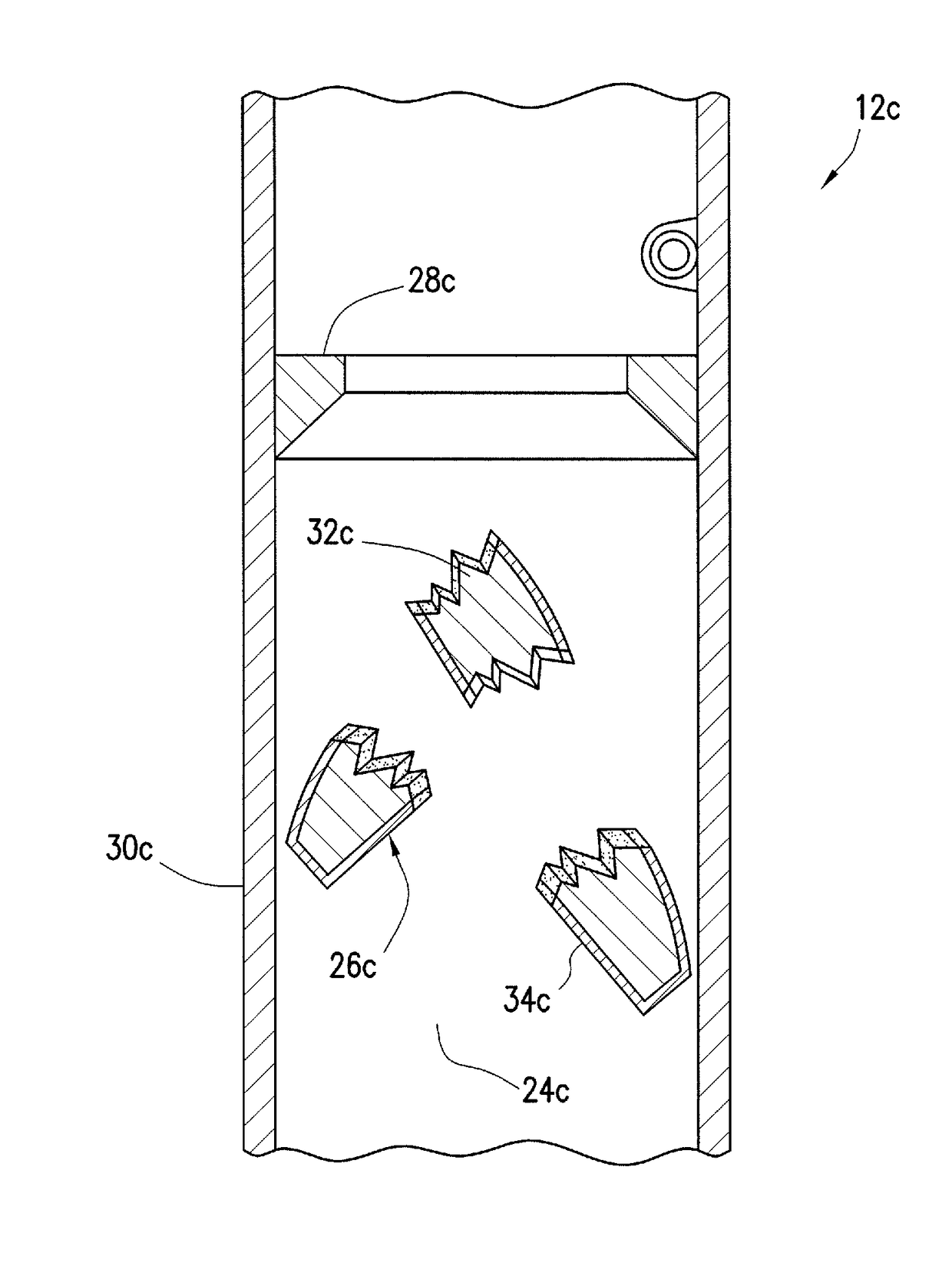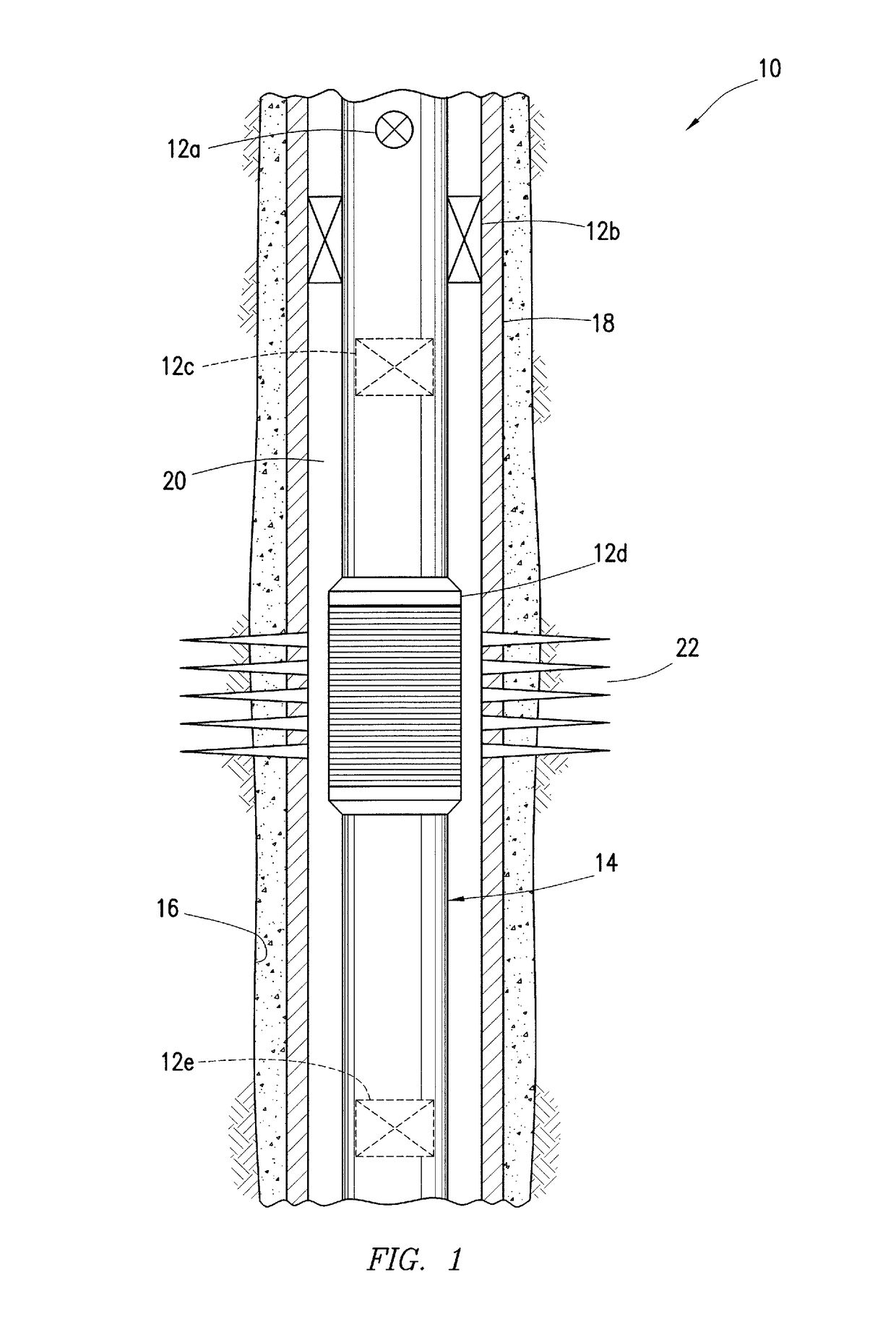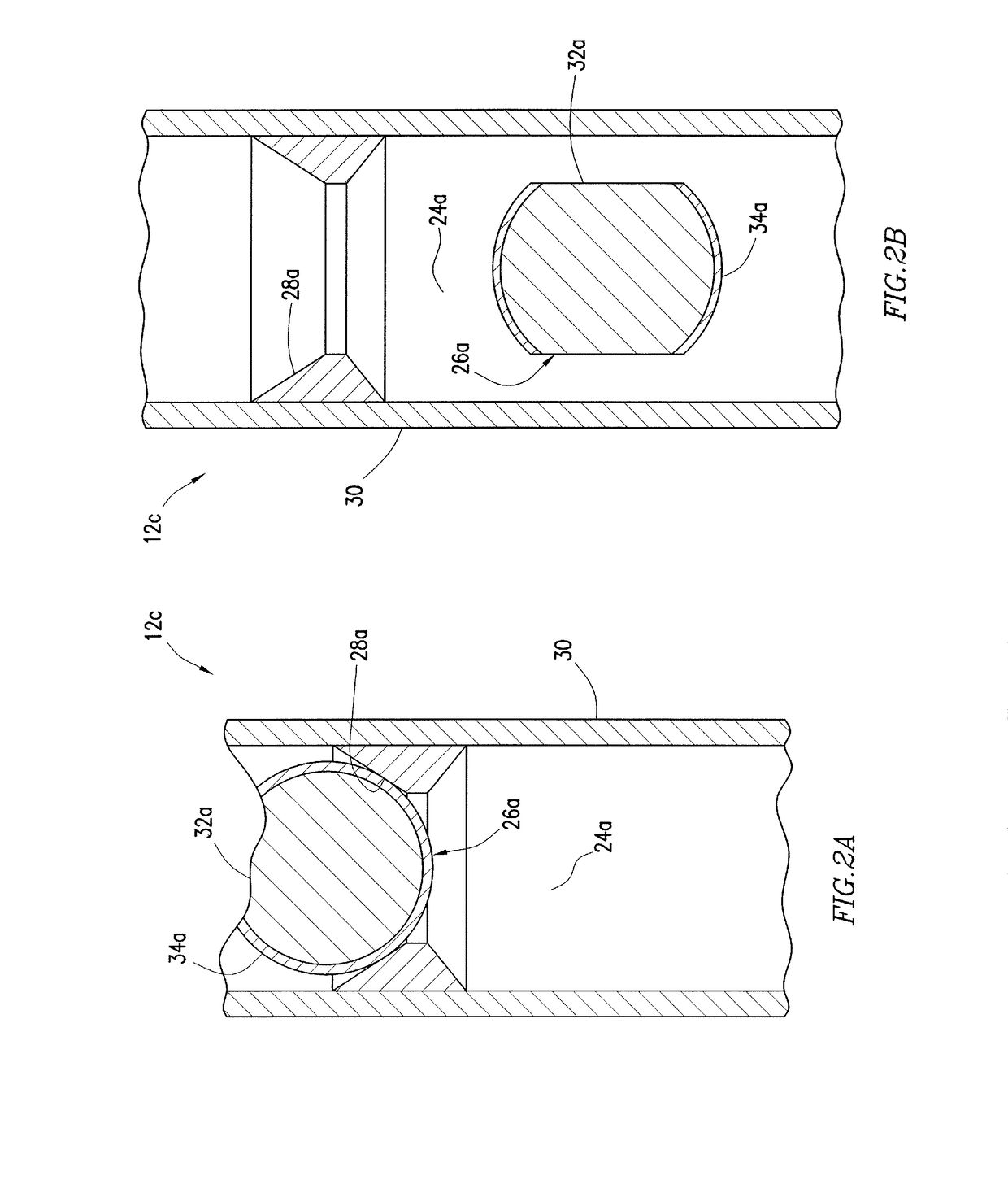Subterranean well and formation treatment
a technology of formation treatment and subterranean wells, applied in the direction of fluid removal, borehole/well accessories, construction, etc., can solve the problems of virtually untreated least permeable formation strata, adverse treatment effects, etc., and achieve the effect of high strength structur
- Summary
- Abstract
- Description
- Claims
- Application Information
AI Technical Summary
Benefits of technology
Problems solved by technology
Method used
Image
Examples
example 1
[0109]Approximately 100 gram samples are prepared in accordance with polymetaphosphate composition formula 1 wherein X is sodium and M is calcium or magnesium, respectively. The samples are each prepared by mixing together sufficient powdered sodium phosphate dehydrate dibasic, ammonium phosphatedibasic and either calcium of magnesium oxide in accordance with formula 1 in amounts sufficient to yield approximately 100 grams of polymetaphosphate. The samples are well blended and poured into a crucible (part number C42, 4.2″ top diameter, 6.45 in height, available from Sundance Art Glass, 6052 Foster Rd, Paradise, Calif. 95969). The crucible is left uncovered and placed into a high temperature ceramic kiln. The mixture is heated within the crucible at 260° C. per hour to about 800° C. The individual sample is held at about 800° C. for about one hour after which the furnace is turned off and the sample permitted to cool to room temperature without forced cooling. The sample then is remo...
example 2
[0111]Samples are prepared and tested as in Example 1 utilizing the composition formula 2 wherein X is sodium and M is calcium and magnesium, respectively. The results of the dissolution tests of the individual samples are shown in FIGS. 7 and 8. Surprisingly, the composition utilizing magnesium exhibits a lower solubility rate in both examples than the composition utilizing calcium.
[0112]The following are additional enumerated embodiments of the concepts disclosed herein.
[0113]A first embodiment which is a method of plugging the perforations in a casing which has been set in a wellbore which penetrates a subterranean formation comprising: flowing down said casing a wellbore fluid having dispersed therein a plurality of substantially spherical high strength degradable compositions being sized to seal said perforations and being comprised of polymetaphosphates of the formula
AXH2P04.2H20+BMO+2(NH4)2HP04->(1 / n)[XM(P03)3]n+ammonia+water
wherein A and B are numbers of moles of reactants a...
PUM
| Property | Measurement | Unit |
|---|---|---|
| strength | aaaaa | aaaaa |
| diameter | aaaaa | aaaaa |
| pressure | aaaaa | aaaaa |
Abstract
Description
Claims
Application Information
 Login to View More
Login to View More - R&D
- Intellectual Property
- Life Sciences
- Materials
- Tech Scout
- Unparalleled Data Quality
- Higher Quality Content
- 60% Fewer Hallucinations
Browse by: Latest US Patents, China's latest patents, Technical Efficacy Thesaurus, Application Domain, Technology Topic, Popular Technical Reports.
© 2025 PatSnap. All rights reserved.Legal|Privacy policy|Modern Slavery Act Transparency Statement|Sitemap|About US| Contact US: help@patsnap.com



